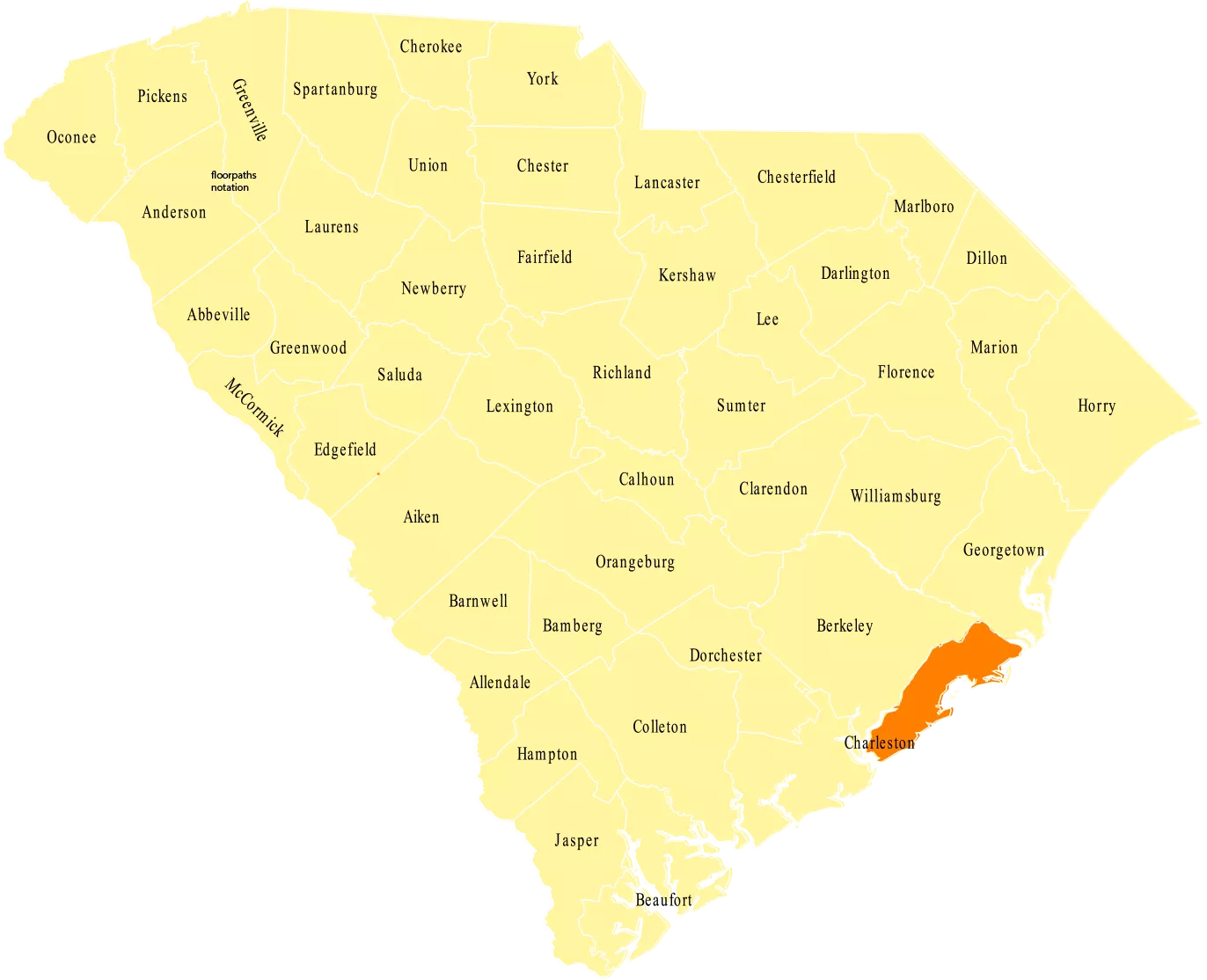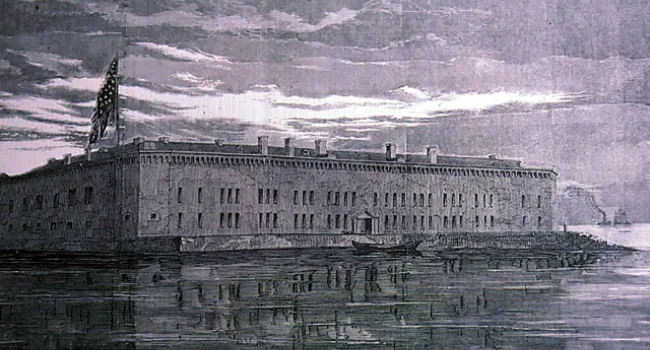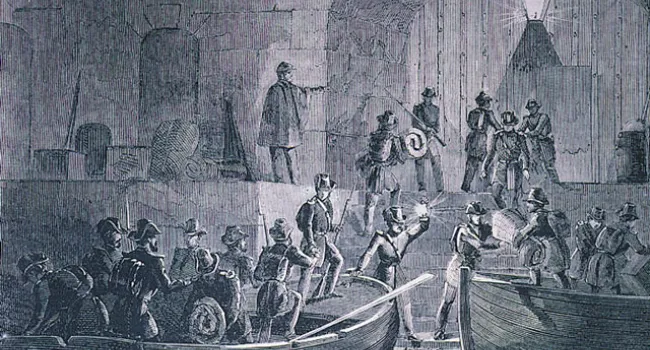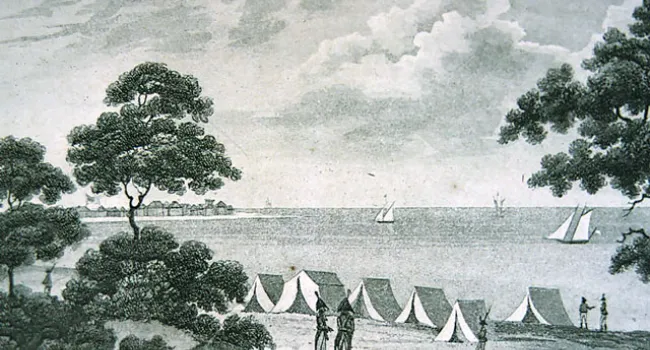
Photo
In December of 1861, a great fire swept through Charleston, destroying much of the city, and making the defense of the city even more difficult. Courtesy of the South Caroliniana Library.
“Charleston County and the city of Charleston, its county seat, are the most historic locations in the state.” Situated in the Lowcountry, the county serves as a popular vacation destination but also relies on the business that results from its port. The area in general serves as a large cultural and economic hub for the state.
Charleston County was founded as Charleston District in 1769, and the district became smaller after some of its lands were used to create Colleton and Berkeley counties. The county and its seat were named after King Charles II.
The city and county are saturated with Revolutionary War and Civil War history. Three signers of the United States Constitution and two famous abolitionists resided in Charleston County, and the Civil War began when soldiers fired shots from the county’s Fort Sumter.

Photo
In December of 1861, a great fire swept through Charleston, destroying much of the city, and making the defense of the city even more difficult. Courtesy of the South Caroliniana Library.
Photo
The housetops of Charleston during the bombardment of Fort Sumter. From "Harper's Weekly." Courtesy of the South Carolina Department of Archives and History.
Photo
Fort Sumter, viewed here from the rear, could not be re-supplied without the Confederate forces in Charleston acquiescing; which they were determined not to do. As Major Anderson's garrison saw their...
Photo
The entry of Major Robert Anderson's (see Major Robert Anderson) command into Fort Sumter on Christmas night, 1860. After the secession of the seven deep South states, federal troops withdrew from...
Photo
The National Democratic nominating convention in session at Institute Hall in Charleston on April 28, 1860. The convention was unable to bridge the differences between northern and southern wings of...
Photo
This view of the Battery in Charleston, circa 1865, gives a good view of how that city appeared during the Civil War, and how it had prepared for its defense. The area is still known as the Battery...
Photo
"Friends and Amateurs in Musick" was drawn in 1827 by Thomas Middleton, an amateur artist; it is probably deliberately modeled on the convivial gathering of "Peter Manigault and His Friends" (see...
Photo
John C. Calhoun (see John C. Calhoun and John C. Calhoun), newly elected to the House of Representatives in 1811, was an eager supporter of avenging American honor by going to war against England...
Photo
Plan of the Siege of Charleston, 1780. The British did not capture Charleston in 1776, but when their strategy for winning the war shifted the military offensive from the north to the south in 1779...
Photo
The "old powder magazine," built in 1703 as part of the northwest bastion of the city's original fortifications, was a storage area for arms as Charleston prepared for the Revolutionary War. Courtesy...